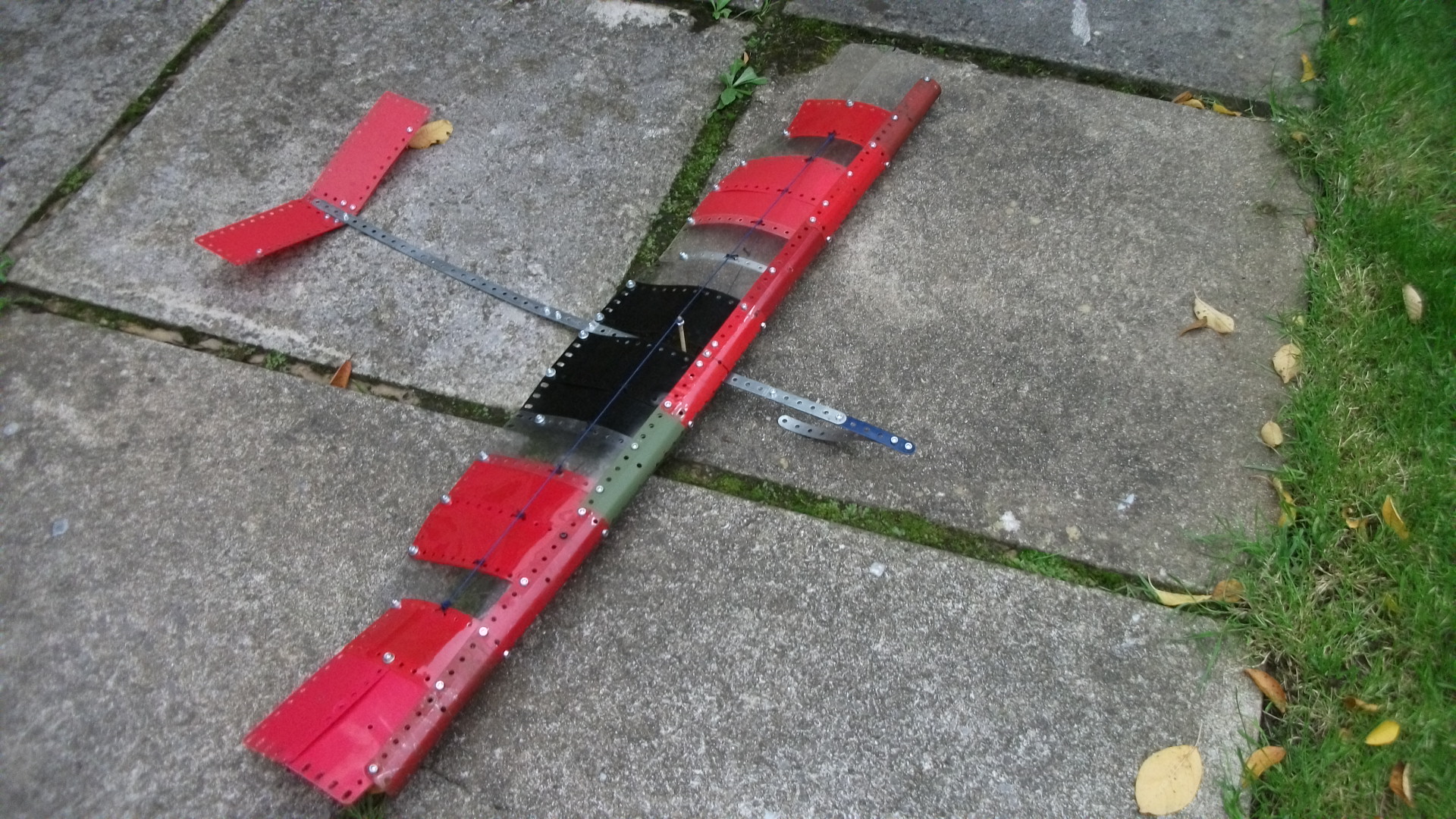(Designed and built by Neil Bedford but inspired by Stan Bedford)
As a lad, my greatest Meccano hero was my late Grandfather, Stanley Bedford. Grandad was an old-school Meccanoman throughout his life and built some very good models.
Around 45 years ago, Grandad built a large Meccano aeroplane – probably the Cabin Monoplane from the Set Ten plans for 1937-41. As a naïve lad aged under ten, I regarded this model with its large spinning prop and aerofoil wing and I asked Grandad whether there was any way that we could make it actually fly. Grandad chuckled and said to me “Neil, I am afraid that Flying, is the one thing that Meccano will never do”.
I never forgot those words and they became something of a personal ‘Holy Grail’ for me. In the past twenty years I have tried a couple of times to build a Meccano model which could actually fly – and always failed dismally. A couple of weeks ago, I was thinking about Grandad and once again his words came back to me “Flying is the one thing that Meccano will never do”.
So I had another go. As you will imagine, it is all about balancing strength against wing size, against rigidity, against weight - and with an amount of aerodynamics thrown in for good measure. After a few more failed attempts I began to make just a little progress – my model was no longer just falling, it was moving forwards too – not very far but it had a definite ‘Glide Ratio’. Then a few days ago I found a great Internet article about the laws of Physics as they relate to gliders – it spoke about wing aspect ratios, fuselage percentage sizes, angle of attack, relative area of the rear stabiliser, centre of gravity, centre of balance and so on – basically a whole heap of ratios and equations – not quite an exact science but not too far off – and very exciting – had I stumbled on the answer?
So, I modified my prototype – I could see no way of making the wings bigger without them buckling when landing, so this provided the fixed value in my calculations – then fuselage length was 75% of the wingspan, with 20% of it in front of the leading edge of the wing, area of the rear stabiliser was 22% that of the wing, centre of balance for the wing was as close as possible to the centre of gravity for the whole glider- and so on.
More testing followed and more tweaking and just before dark on Thursday this week, I returned to my back garden and tentatively gave the glider a very gentle chuck from shoulder height (about 5ft off the ground – I am not very tall).
It landed 23 feet in front of me.
Some modifications increased the flight by another couple of feet but the Meccano flight record has been extended to 25 ft.
I have rebuilt the wing and lengthened the nose (see photo). The second image is my back garden and (if you look closely) it shows 4 tennis balls, spaced 10 feet apart. I stood just before the first one and chucked the glider from shoulder height – look closely and you will see the glider resting on the grass between the 3rd and 4th balls – a flight of 25 feet – my record so far.
I still think that 30 ft may be possible but after a couple of hard landings the wing bends slightly and this small change makes a dramatic difference to the flying characteristics. Bending the tail up slightly helps a little – I wonder if a different shaped tail might help...
There is a lot of work to do yet – my target is 30 feet – but I have built a Meccano model which can genuinely fly, using only the standard parts which were available when that original statement was made to me all those years ago. So now I think I can finally correct Stanley – "There is nothing that Meccano cannot do".
Neil Bedford



